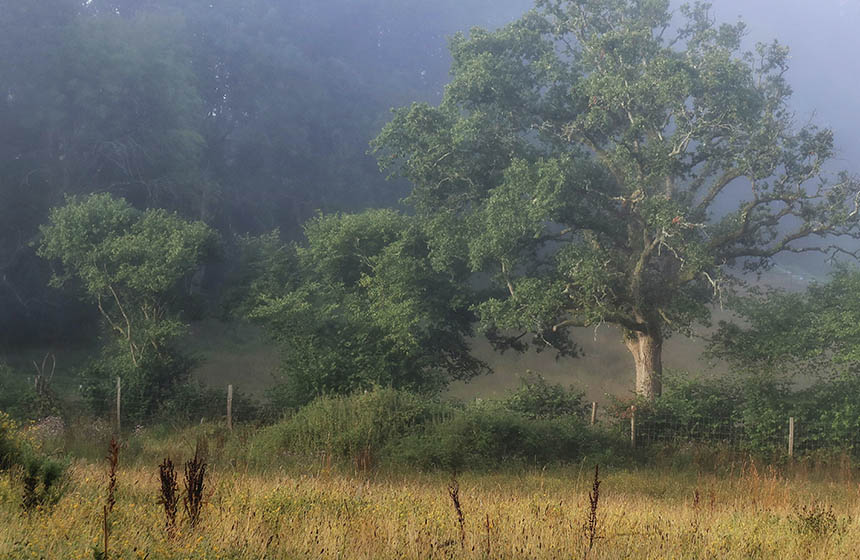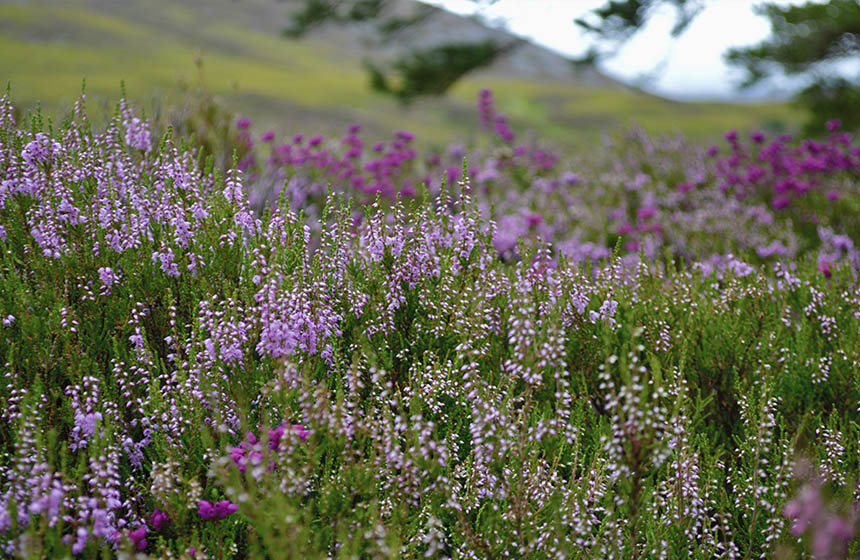Nattergal: A natural capital approach to rewilding degraded land at scale
Nattergal is a nature recovery business that aims to purchase and restore degraded land to enhance biodiversity, carbon storage, water quality and soil health, generating income through natural capital markets and eco-tourism while delivering benefits for local communities.
Nature-based intervention:
Nattergal aims to restore bought, leased, or managed land to improve carbon sequestration, water quality, soil function, flood protection, and air quality (1). Alongside these goals, Nattergal aims to facilitate employment and outreach opportunities for local communities and encourage research collaborations. Financial returns from restoration will be created through the sale of Biodiversity Net Gain (BNG) units and other natural capital investments.
Overview of context:
Nattergal was formed in 2021 as a nature recovery company that aims to promote investment in natural capital assets. Their first site, Boothby Wildland in Lincolnshire, was purchased in December 2021, and was a 617 hectare intensively managed cereal farm. Although biodiverse habitats remain around the field margins, due to good management under agri-environment schemes, 90% of original wetlands on the site have been lost. As part of restoration efforts, intensive cereal production will be gradually stopped, and vegetation will be mostly left to recover naturally. Plans include the introduction of herbivores and the restoration of natural site hydrology through the destruction of created field drains and restoration of the river.
A second site of 292 hectares, High Fen Wildland in Norfolk, was purchased in December 2022 (3). Once an arable and daffodil farm, it later became unproductive and in 2007 it was restored to seasonally wet grassland in partnership with Natural England. Following research on the site, Nattergal plans to initiate restoration in 2024, aiming to increase habitat diversity and improve carbon sequestration.
Case effectiveness on
Climate change
It is estimated that the Boothby Wildland’s nature recovery project will sequester over 100,000 tonnes of CO2 over the next 50 years, but as the project is at an early stage no outcomes are yet reported (4). At High Fen, the plan was to stop the rich fenland peat from drying out in summer, creating high carbon emissions, but this is proving more challenging than expected. Investigations showed that the water is draining away through a layer of sand that underlies the peat, to reach the deep chalk bedrock. Although there is a layer of impermeable chalk marl between the sand and the chalk, this is of variable thickness and it is thought that the water drains through weak points in this layer. Nattergal is investigating the option of creating clay-lined trenches to block these weak points, to increase water retention in summer.
At Boothby, 2 km of the West Glen River that runs across the site was previously straightened, creating an incised channel (5). This has resulted in fast moving torrents of water rushing through the river during high rainfalls, contributing to flooding downstream, and low water levels during dry seasons. Under the Defra Landscape Recovery Pilot programme, Nattergal plans to widen the channel, create ponds and meadows, and lower the floodplain to support water retention and reduce floods. Together with the water retention plans for High Fen (see above), these measures are likely to result in increased resilience to impacts of extreme weather, though at this early stage no impacts are yet reported.
Ecosystem health
Ecological effect: Not reportedBaseline biodiversity surveys were conducted in 2022, but results have not yet been made available (7). Nattergal is seeking feedback on beaver reintroduction in an enclosure on West Glen River, which reportedly currently does not support significant plant or animal communities (5). This is expected to increase wildlife, water quality, and reduce future flood events.
Socioeconomic outcomes
Weekly volunteer programmes, community walks, and community engagement days at Boothby Wildland encourage local communities to support hedge laying, bird ringing, and fixed point photography across 19 posts on the site (4). Employment opportunities are also created through the projects and potential ecotourism plans, with 4 people hired in Boothby as of February 2024. Research collaborations with local universities are facilitated to increase the knowledge base on restoration practices and monitor projects. Nattergal has an effective community engagement strategy (see Governance). Local community opinions on project initiatives are sought through workshops, newsletters, and at Village Hall events (8).
Governance
Local participation in Governance: PassiveNattergal is a sister company to Knepp Wildling and Highlands Rewilding (9). The Non-Executive Chairman of Nattergal, Sir Charlie Burrell is one of the founders of Knepp Wildland, and Non-Executive Director Jeremy Leggett is the founder of Highlands Rewilding. Nattergal acts as an umbrella company that raises the investment profile and owns individual restoration sites (8). Boothby Wildland and High Fen Wildland are run as individual companies with local steering groups and a local community engagement plan.
Nattergal has recognised the vital role of engagement in their mission. In 2023, they partnered with researchers from the Countryside and Community Research Institute (University of Gloucestershire) and University of Oxford to create an evidence-led strategy for public and stakeholder engagement. This strategy encompasses best practices, emphasising the importance of engagement in achieving environmental goals. Nattergal’s approach combines online and in-person community workshops to involve local stakeholders in shaping Boothby Wildland’s plans. These workshops aim to maintain an open dialogue with the community to assess the project’s strengths, weaknesses, opportunities, and threats. Feedback on their approach to engagement is also collected to continuously improve their strategy over time, helping to ensure a more effective and responsive approach that works well for local people.
Finance
Nattergal was set up to provide sustainable financial returns from landscape restoration. Potential income streams include ecotourism and accommodation, sale of biodiversity, carbon, nitrate and phosphate credits, and sale of biodiversity net gain (BNG) units (10). BNG units are being advertised for purchase on the company platform for both sites (11). Following restoration, BNG units are approved by a Section 106 local agreement or Conservation Covenant. Habitats advertised in February 2024 for Boothby include lowland meadow, ponds, natural grassland, scrub, and woodland, and habitats for High Fen include floodplain wetland mosaic, scrub, and grassland. Following restoration, these sites will be managed and monitored for 30 years. Nattergal is part of an Environmental Land Management Landscape Recovery pilot, which enables land managers to apply for funding for large-scale landscape recovery programmes (3).
Monitoring and evaluation
Prior to restoration efforts at Boothby, aerial mapping through drone imagery was carried out to establish an understanding of the landscape. In addition, breeding bird surveys are conducted along transects to plot birds seen or heard. This collected survey data is then compared with nationwide breeding bird data obtained by the BTO.
As part of the sale of BNG units, sites will be managed, monitored and results reported for 30 years. Ecologists use a habitat classification system, UK Hab, to measure biodiversity on site. BNG units are then calculated using the Defra Statutory Biodiversity Metric 4.1 tool, which assesses habitat conditions as a proxy for biodiversity (12). The tool compares baseline to post-management changes in habitats by analysing habitat size, condition, distinctiveness, and their significance due to their location.
Monitoring and research efforts are conducted in partnership with research institutions. For example, the baselining of High Fen is conducted in partnership with Cambridge University and the UK Centre for Ecology and Hydrology (3).
Trade-offs and limitations
Some residents at Lincolnshire have voiced concerns regarding restoration initiatives, citing the loss of arable land for farming and potential conflicts arising from the introduction of herbivores (13) (14). However, according to Nattergal, the land was producing only moderate yields of crops destined for livestock feed.
References
- Nattergal. N.d. Invested in nature. https://www.nattergal.co.uk/
- Nattergal. N.d. Boothby Wildland. https://www.nattergal.co.uk/boothby-wildland
- Nattergal. N.d. High Fen Wildland. https://www.nattergal.co.uk/high-fen-wildland
- Nattergal. 2024. New biodiversity net gain rules will help nature thrive on 600-hectare Lincolnshire Wildland nature restoration project. https://static1.squarespace.com/static/62bdbafba41de5210660365f/t/65cb5c2d4067a86c80f5df50/1707826221494/BNG+Boothby+Wildland+Media+Release.pdf
- Nattergal. N.d. River restoration: slowing the flow. https://www.nattergal.co.uk/blog/river-restoration-slowing-the-flow
- Nattergal. N.d. Working with water. https://www.nattergal.co.uk/blog/working-with-water
- Strutt & Parker. 2022. Meet the natural capital pioneers. https://rural.struttandparker.com/article/meet-the-natural-capital-pioneers/
- Nattergal. N.d. Videos. https://www.nattergal.co.uk/videos
- Nattergal. N.d. Our sister companies. https://www.nattergal.co.uk/partners
- Deklee, I. 2022. Boothby Wildland. https://www.lincstrust.org.uk/sites/default/files/2022-05/05%20IdKlee%20GIGL%20EVENT-%20IVAN%20DE%20KLEE.pdf
- Nattergal. N.d. Biodiversity net gain. https://www.nattergal.co.uk/bng
- Department for Environment, Food & Rural Affairs. 2024. Calculate biodiversity value with the statutory biodiversity metric. https://www.gov.uk/guidance/biodiversity-metric-calculate-the-biodiversity-net-gain-of-a-project-or-development
- The Guardian. 2022. ‘It’s like winning the lottery’: Lincolnshire rewilding plan welcomed by some… others not so happy. https://www.theguardian.com/environment/2022/nov/12/its-like-winning-the-lottery-lincolnshire-rewilding-plan-welcomed-by-some-others-not-so-happy
- The Critic. 2023. Natural goodness. https://thecritic.co.uk/issues/may-2023/natural-goodness/

Intervention type
- Management
- Restoration
Ecosystem type
- Temperate forests
- Temperate grasslands
- Streams, rivers, riparian
Climate change impacts addressed
- Freshwater flooding
Instigators
- Local private sector
Societal challenges
- Disaster risk reduction
- Economic and Social development
- Health
- Water security
Outcomes
- Food security: Unclear
- Water security: Not reported
- Health: Positive
- Local economics: Positive
- Livelihoods/goods/basic needs: Not reported
- Energy security: Not reported
- Disaster risk reduction: Unclear
- Rights/empowerment/equality: Not reported
- Recreation: Positive
- Education: Positive
- Conflict and security: Unclear
- No. developmental outcomes reported: 6
Resources
Read resource 1Literature info
- Grey literature




